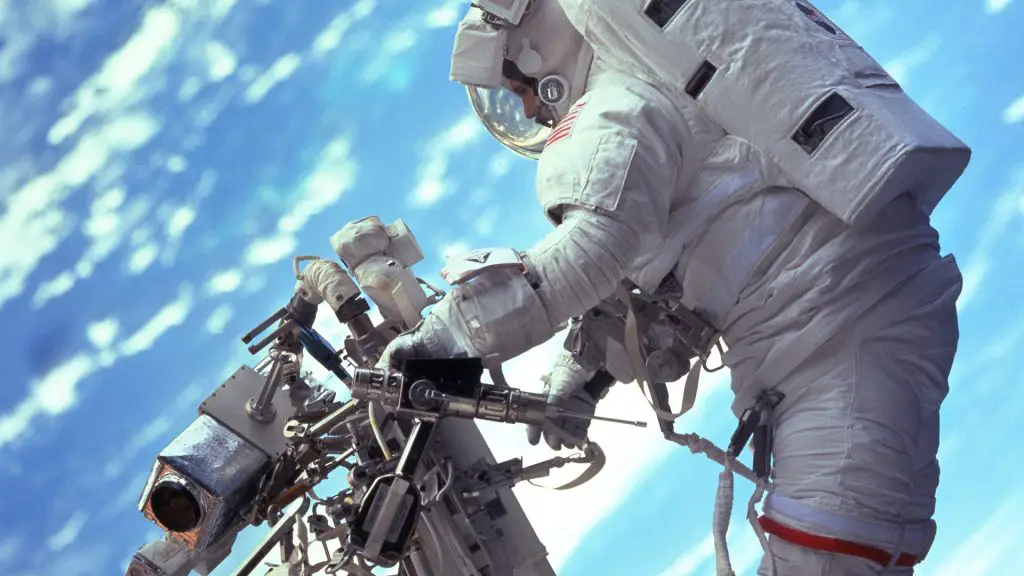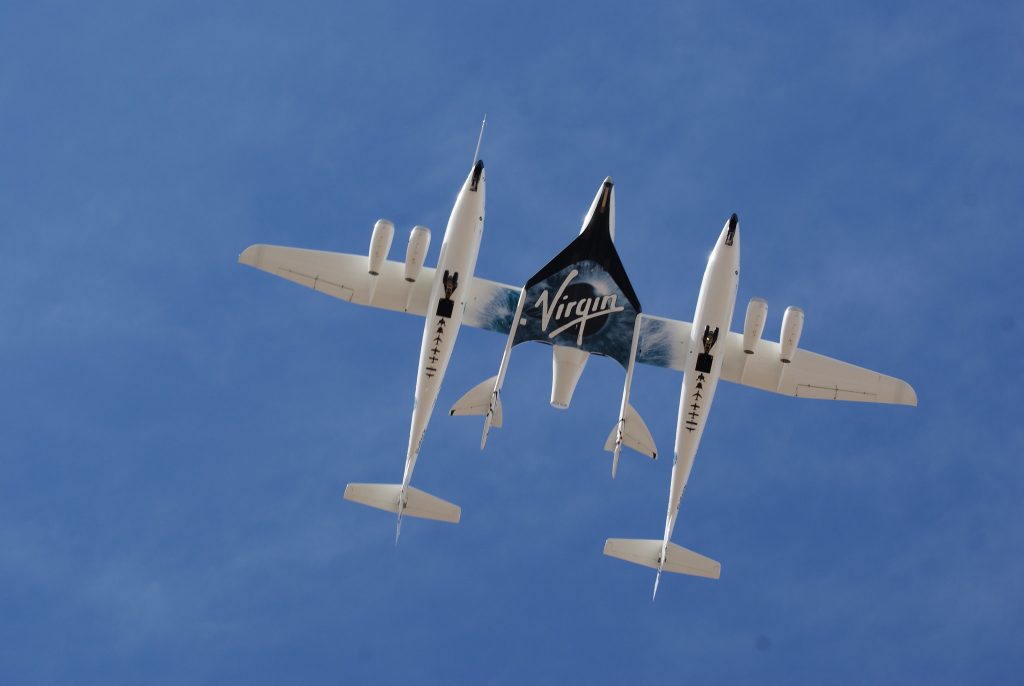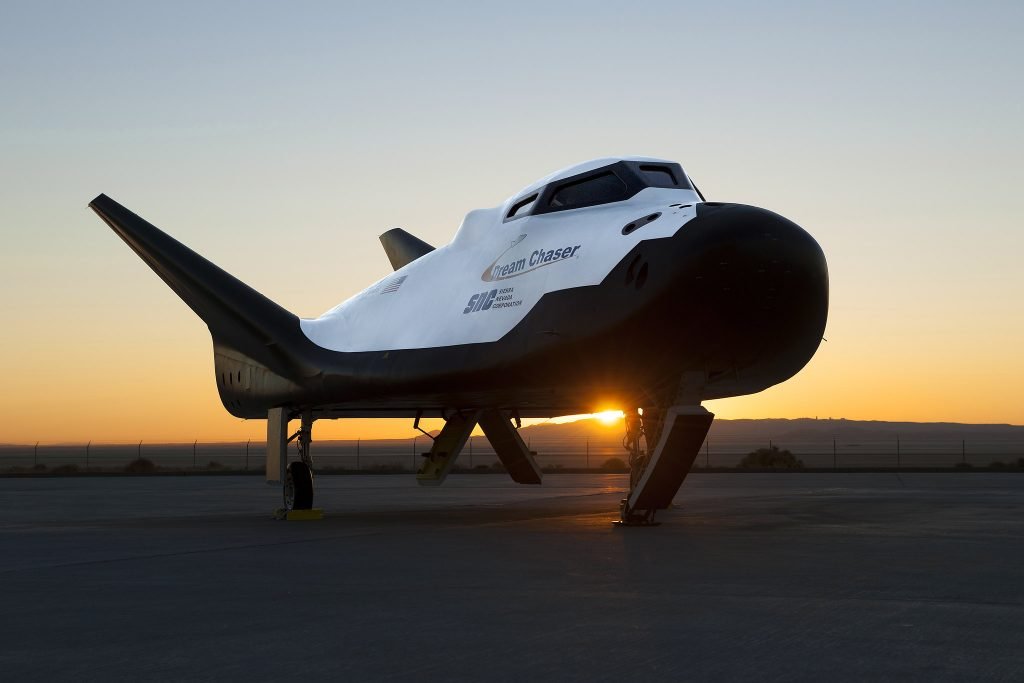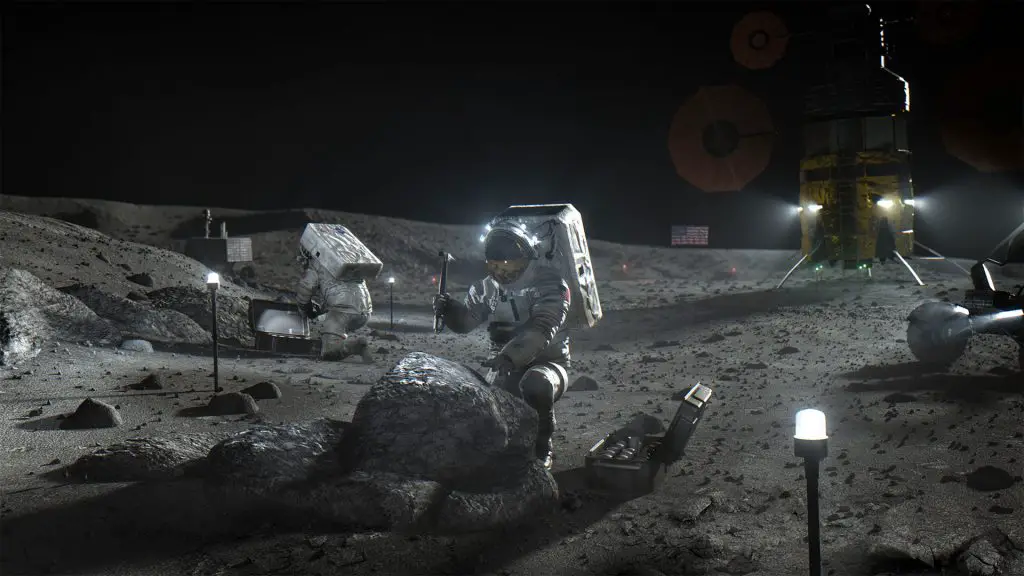Any links on this page that lead to products on Amazon and other companies may be affiliate links and we earn a commission if you make a qualifying purchase. Thanks in advance for your support!
Updated January 2024
New spacecraft are coming into service that will reduce the cost of access to space for aspiring astronauts and the world’s space agencies are taking on new astronauts to work on the International Space Station (ISS) and perhaps one day travel to the Moon and on to Mars.
Very few people have been into space – so far only about 680 since 1961. So the competition to join the world’s astronaut teams is fierce.
But what topics should young people study at school and University to get the best chance of being accepted as trainee astronauts? To find out how to become an astronaut in the UK, read on below.
In summary, the key requirements for becoming an astronaut are:
- Available European Space Agency (ESA) or NASA requests for astronaut applications – usually every 4 years or so for NASA, perhaps up to 10 years for ESA.
- In the case of NASA, US or at least dual citizenship
- Appropriate technical “STEM” qualifications at degree level, or in the case of pilot-astronauts, at least a thousand hours of military or test pilot flying
- Age range of ideally 27 to 37 years old.
- Excellent physical and mental health and good fitness, plus high motivation and determination.
- In the case of private “space participant” self-funded astronauts, good health and general fitness, plus of course extensive financial resources
How to apply to be an astronaut
The new space vehicles, the Space-X Crew Dragon (ref 1) and the Boeing CST-100 Starliner (ref 2) for orbital access and the Virgin Galactic’s (VG) SpaceShipTwo (SS2) (ref 3) and Blue Origin’s New Shepard (ref 4) spacecraft for suborbital flights, will boost the chances for explorers, scientists and private “space participants” to get into space – this is what Arthur C Clarke called becoming “citizen astronauts” as an approach.
The traditional route to space until the present has been via professional space agency spaceflight, covering pilot and technical mission-specialist backgrounds and qualifications.
So, two approaches are currently available for aspiring astronauts from the UK seeking orbital access – either via NASA or ESA space agency flights, or looking to join the private space flights that will be available in future years via companies like Axiom and Space Adventures on the 4-7 seat Space-X Crew Dragon, or 4-seat Boeing CST-100 Starliner orbital spacecraft, as well as the current Russian 3-seat Soyuz capsules.
Working with NASA, dual-citizenship status might be a possibility. UK-born astronauts Michael Foale, Piers Sellers and Nick Patrick became NASA astronauts in this way.
What do I need to study to be an astronaut?
All space agencies currently require “STEM” topic qualifications for consideration – this covers science, technology, engineering and maths. Medical doctors can also apply.
An aviation career route for astronaut selection is also a possibility – the UK’s Tim Peake who flew to the ISS in 2015 via ESA selection in 2008 had extensive helicopter flying experience with the Army Air Corps and as a test pilot, plus had an aerospace engineering degree that he gained later in life.
The UK-born NASA astronaut Piers Sellers studied meteorology and climate science, whilst NASA astronaut Kate Rubins studied biology and researched viral diseases. The UK’s Helen Sharman, the first British astronaut, studied chemistry, whilst British-American NASA astronaut Michael Foale studied astrophysics.
Considering what type of engineering is best to become an astronaut, space agencies vary in their approach to the issue – traditionally , test-pilot astronauts tended to have aerospace engineering degrees, though for non-pilot scientist and mission specialist work, useful broad topics might include electrical and mechanical engineering and chemical engineering.
NASA possibilities

The US (NASA) (ref 5) has of course by far the largest number of active astronauts, with up to 48 men and women involved for future ISS and Artemis lunar mission activities – indeed, of the 239 astronauts visiting the ISS since Nov. 1998, over 151 have flown as NASA employees.
Many would consider that, because of the relative scale of NASA’s commitment to space, the USA is the easiest country to become an astronaut in.
For the next NASA selection opportunity, from March 2024 new astronaut intakes for NASA’s Artemis lunar programme started occurring and another can be anticipated in four years’ time.
Covering potential applicants, apart from requiring dual nationality, the normal NASA qualification criteria would apply – this covers a STEM education background, science, engineering or medical graduates with two years experience, or jet pilot flying of at least 1,000 hours. This has to be combined, of course, with excellent health, plus basic skills in leadership and teamwork.
In 2016/17 some 18,300 applied, surpassing the previous record of 8,000 in 1978. Eleven new astronauts were appointed by the Selection Board for that last process and at the Johnson Spaceflight Centre (JSC).
How long does it take to be an astronaut?
The NASA astronaut candidates, “ASCANS”, spend two years undertaking EVA training, ISS procedures, T-38 jet flying and robotic arm operation techniques.
NASA has selected over 350 astronauts to date, via 22 “classes”.
Regarding their character, applicants are expected to possess the qualities of tenacity, trustworthiness, be essentially error-free as a goal, be balanced with hobbies and interests beyond spaceflight in their lives and be able to learn Russian for Soyuz and ISS operations.
For the 2013 selection year, chosen astronauts were 50/50 men and women. Experience working with NASA is generally considered an advantage and student internships from the Jet Propulsion Lab (JPL) (ref 6) and Johnson Space Centre (JSC) are useful. Repeat applications are often welcomed by NASA.
European Astronaut Corps (EAC)
The UK is a member of the European Space Agency (ESA) (ref 7) – this currently has 6-17 astronauts as part of an active group. The ESA Corps is broken down to three from Germany, three from France, three Italian, one Swedish, one Danish, and one Dutch.
European astronauts are based at the European Astronaut Centre (EAC) in Cologne, Germany.
The previous corps of about seven ESA astronauts has now been expanded. An ESA astronaut selection process occurred during 2021-22 and at the Paris ESA Ministerial meeting in November 2022, three new UK individuals were named as candidates to follow Tim Peake, who is no longer in the Corps, as a UK/ESA astronaut – the British astrophysicist Dr. Rosemary Coogan became a new “career” astronaut candidate from April 2024, plus scientist Dr. Meganne Christian is a “reserve” astronaut, with British Paralympian athlete and doctor John McFall chosen to be tested as a “para-astronaut”.
The new ESA intake boosted the previous corps of six “career” astronauts, with five new individuals joining as chosen candidates and eleven “reserve” mission-specific astronauts, together with the new “para-astronaut” – the total of twenty-four potential ESA astronauts will increase the UK’s and ESA’s chances of achieving both orbital and future lunar missions

Many will ask, does the UK have a space programme?
It does of course, though until 2009 this was focussed on the satellite and science research aspects of space, with no commitment to human spaceflight at all. Now the UK Space Agency (ref 8) contributes to the ISS activities in a limited way, with some focus developing for small inputs to the NASA-led plans to return to the Moon via Project Artemis.
The new ESA “career” astronaut Rosemary Coogan and the “reserve” astronaut Meganne Christian , plus para-astronaut candidate John McFall , will stand the chance of an orbital mission, possibly with a future lunar flight one day as part of the ongoing NASA-led Project Artemis return to the Moon
In 2023 the UK Space Agency entered into an agreement with the Axiom spaceflight company to fly a future two-week all-British mission, with a crew of four astronauts in the Dragon spacecraft – this will dock with the ISS. New privately-led research would occur during the spaceflight and this would part-fund the project cost. Many expect that Tim Peake will be part of this mission and in 2024 he was appointed by Axiom as an adviser.The other three UK astronaut crew possibilities are ESA’s Rosemary Coogan, Meganne Christian and John McFall.
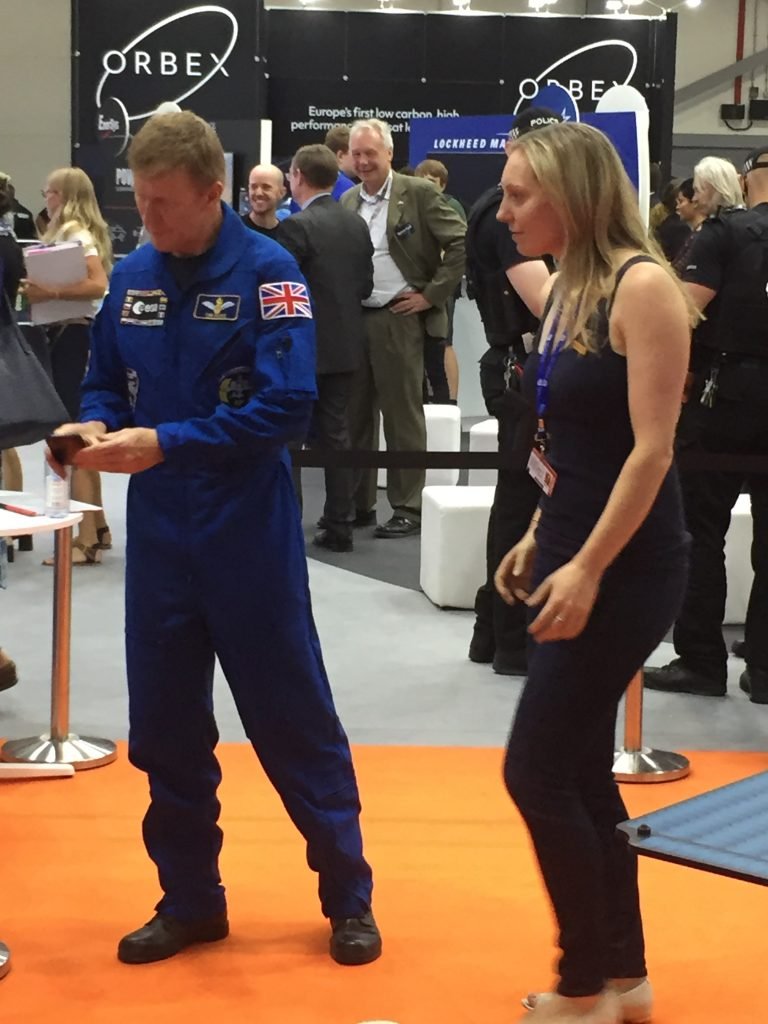
Wider opportunities for potential UK astronauts might be expanded in the future, of course. Bilateral or even trilateral agreements directly with NASA, India or China might be feasible as a UK alternative to ESA astronaut activities.
Unlike NASA, ESA normally requires astronaut selection applicants to have an approved JAR Class 2 flight medical as part of the pre-application documents, together with similar background qualifications and qualities as NASA applicants.
Excellent health, 20/20 vision, being in a normal age range of 27-50 years old. and possessing good social and communication skills are emphasised by ESA. A height range of 1.53 to 1.9 metres is set and a basic “PADI” level divers’ qualification might be a useful candidate asset.
Generally, candidate selection takes several months, with an initial selection followed by psychological screening, aptitude tests, medical tests, job interviews and final selection reviews by ESA’s DG. Of 8,000 candidates in 2008, six astronauts were selected by ESA in 2009.
Studying Tim Peake’s astronaut selection guidebook (ref 9) would be an excellent starter for anyone contemplating an application, plus doing a study of the selection tests and reviews employed during the BBC’s popular 2017 “Astronauts: Do you have what it takes” series, now in its third TV re-run.
How much does an astronaut make?
Many will ask “how much does an astronaut make” and “what is the ESA salary”?
The answers are that astronaut salaries are above average, being about the same as an airline pilot – when asked this question most would simply say that they could probably earn more money elsewhere and they are in fact committed to their somewhat rare jobs because of the love of the subjects and experiences that they encounter!
Private orbital spaceflight
For those who can afford it, space tourism or “astronaut participant” approaches are an alternative to professional government astronaut career paths. A good but basic level of fitness is required, but no serious technical backgrounds are needed for this route.
Between 2001-2009, the Space Adventures company that was founded by Eric Anderson in 1998 flew seven private astronauts on eight “space participant” client missions to the ISS. These were arranged by the US company via agreements with Russia’s space agency Roscosmos. Early ticket prices were approximately £15m per 10-day mission, expanding to £25m for later flights. The “tourist” flights included trips via Soyuz for Dennis Tito, Mark Shuttleworth, Gregory Olsen, Anousheh Ansari, Charles Simonyi who flew twice, plus Guy Laliberte. In 2008, UK-born Richard Garriott de Cayeux, son of NASA astronaut Owen Garriott, flew to the ISS on Soyuz TMA-12.
Via the new Space X Crew Dragon and the Boeing Starliner spacecraft, access to orbital space is likely to be relatively cheaper than via Soyuz, though price competition should evolve over time to the benefit of market takers.
In September 2021, Space X successfully flew the three-day “Inspiration 4” private orbital mission into Earth orbit. Paid for by the lead private astronaut Jared Isaacman, this $200m fund-raising and research flight sent four private astronauts, or “space participants” as some like to be called, into a 366 mile (590km) high orbit – this was well above the 250 mile (400km) orbiting height of the ISS. The astronauts spent their time enjoying zero-g, fully experiencing the thrill of being in space and taking-in the extraordinary views of the Earth through a glass-domed “cupola” positioned at the tip of their cone-shaped Crew Dragon spacecraft “Resilience”. One crew member, Hayley Arcenaux, at 29 yrs. old became the youngest US astronaut to go into space.
As the first purely private orbital spaceflight, this history-making mission has paved the way for future non-government sponsored astronauts to go into space – it showed that normal “people in the street” can train for a few weeks, launch, and experience spaceflight safely. Similar to the way that the 1920-30s gradually saw the introduction of safer and more reliable airliner travel for ordinary citizens, so the coming decades will see an accelerating expansion of regular orbital “space tourism” with no essential requirement for outstanding fitness or advanced astronaut skills for the participants.
The Crew Dragon spacecraft flew entirely automatically, although the crew and ground-control could have intervened if the flight was not proceeding nominally.Subsequently Isaacman has undertaken a “spacewalk” EVA privately on the Inspiration 5 mission.
Interested in learning to fly a microlight? Check out this article, here.
This was followed by the “private astronaut” visit of Russian actress Yulia Peresild to the ISS on a Soyuz flight for movie filming.For the future, US actor Tom Cruise has been mentioned as another possible visitor to the ISS for filming purposes.
Bigelow Aerospace have booked four space participant slots on the Crew Dragon for about £40m each. Starliner prices are expected to be more costly though, perhaps running at £55m per seat.
For the longer term, private human access to orbit and beyond should become even more affordable. An unknown for the late 2020’s onwards is the Space-X “Starship” project – this is the 5,000 tonne two-stage re-usable vehicle that Elon Musk expects may slash orbital access and deep-space flight prices. An early free-return lunar flight of the “Starship” is being proposed for Japanese billionaire Yusaku Maezawa, together with his intended crew of 6-8 “artists”.
Suborbital flights
Sub-orbital spaceflight is now closer to us than ever before and it offers spaceflight experience at far less cost than orbital access.
Two contenders are intending to reach sub-orbit with fare-paying passengers, Richard Branson’s Virgin Galactic (VG) and Jeff Bezos’s Blue Origin company. Both have flown to sub-orbital “near space” heights since 2021. Both spacecraft being used carry six fare-paying passengers, although Blue Origin flies fully automated with only the six passengers on-board, whilst VG also has two pilots.
In late 2021 Blue Origin flew the actor William Shatner – “Captain Kirk” in the original Star Trek series – to sub-orbit space onboard the New Shepard rocket.
Psychological issues
So, what is the typical astronaut’s psychological profile and what would an aspiring candidate for government-financed space agency selection need to show to allow them to be selected from the thousands of others determinedly applying to become astronauts either for NASA, the European Space Agency (ESA) ,or other human spaceflight agencies across the world?
How competitive is it to become an astronaut? – space agency assessments are designed to sift through those considered most suitable, in terms of technical competence, performance success and psychologically suited for the work.
Well-used to assessing astronaut motivations and characteristics, space psychologist Dr. Iya Whiteley, Director of the Centre for Space Medicine at UCL’s MSSL , has some pithy advice. She worked as an ESA Astronaut Instructor, developing training courses for new ESA astronauts as a human behaviour expert, plus has interviewed many astronauts and aspiring candidates.
Her recent book “Toolkit for a Space Psychologist” (2018) describes techniques and technologies to monitor crew well-being and to support them psychologically on the long journey to the Moon or, eventually, for the much longer voyage to Mars.
Dr. Whiteley collaborated with UK/ESA astronaut Tim Peake, assisting with his manual “The Astronaut Selection Test Book” (2018). This book is an essential read for anyone applying as a future professional astronaut.
She also worked with astronaut Chris Hadfield as part of the selection team for the BBC’s 2017 “Astronauts: Do you have what it takes”, a series competition that was eventually won by Dr. Suzanne Imber.
Regarding the type of personalities the space agencies are looking for in astronaut selection programmes, Iya Whiteley believes that some of the best astronauts are straightforward, determined people, considerate of others and not “alpha-males” or “alpha-females”. They would learn quickly from their experiences, never making the same mistake twice.”
Scientific research
Scientists will be regularly accessing space via sub-orbital flights in the coming years. NASA recently announced the formation of its new Sub-orbital Crew Office (“Sub-C”), with Scott Colloredo as its Head. This new approach should boost access to space for an enlarged group of both space-agency and private scientist astronauts.
The new grouping will seek agreements with VG and Blue Origin for both astronaut training and microgravity science experiment flights – both companies have flown automated NASA experiments on test-flights to date and have designed their cabin interiors to flexibly allow for future experiment racks, instead of passenger couches.
Therefore, for aspiring private or government scientist flight participants who are seeking relatively low cost 3-5 minute microgravity periods, these two approaches are appealing, being well ahead of the 20 second periods of microgravity offered by parabola flights in aircraft.
Sub-orbit space science will be more viable. For example, the XCOR company had planned to fly its two-seat Lynx space plane to 100km with automatic and scientist-managed experiments on-board, though this company has subsequently closed down operations. It’s quoted seat prices at the time were a relatively low, at £60,000. Scientist-astronauts could have then included those like Dr. Faith Villas of The Planetary Institute in Tucson. Her Institute was planning to fly an IR/UV astronomical telescope on that spaceplane and, in common with other researchers, they may look to VG and Blue Origin for a new alternate route to sub-orbit.
How hard is it to really become an astronaut?
For astronaut selection for the younger aspiring space travellers therefore, the conclusions are that STEM topic studies and qualifications are vital for government agency selection as a professional astronaut.
Maintaining a good level of fitness is important too, plus focussing on active sports like diving, flying and skiing.
The alternative is to go for a private spaceflight via the new “space tourist” approaches soon to be available for both sub-orbit and orbit. These are likely to cost £200-300,000 for sub-orbit experiences and £30m plus for orbital trips.
At the end of the day though, becoming a professional astronaut requires much hard work and total dedication. For some, the dream really does come true though and the extraordinary experience of reaching space becomes a reality.
References 1. 2. 3. 4. 5. 6. 7. 8. 9.
Image credits: tableatny (Flickr)

